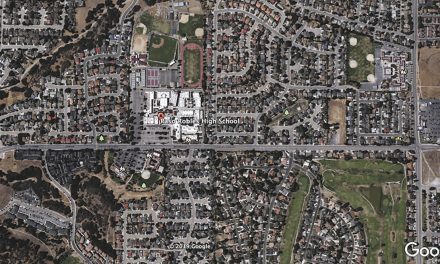Woods Humane Society Offers Free Webinar, 5 Tips for a Smooth Transition Back to ‘Normal’
SAN LUIS OBISPO — California may be ready to re-open on June 15, but that doesn’t mean the state’s many “Pandemic Puppies” are ready to be left home alone. Woods Humane Society’s next “Woods From Home” Webinar, scheduled for 4 p.m. on Thursday, May 20 —coincidentally, National Rescue Dog Day—will help pet parents prepare their dogs for the transition back to normal work and school routines.
“COVID restrictions and quarantines over the past year have kept many families home with their pets for most of the day, so dogs have become used to that,” warns Woods University Behavior & Training Department Manager Michelle Rizzi. “A sudden change back to leaving the dog alone in the home may cause dogs anxiety, stress, frustration, and depression, and result in unwanted behaviors such as barking, escape attempts, and destructive tendencies.”
To make things easier on dogs and their owners, Rizzi and her team urge pet owners to begin now to train dogs for the transition to new normal routines utilizing these 5 top tips for easing pets into a post-COVID lifestyle.
1. Keep a Work-Week Routine
Dogs love routine. Start preparing them for the back-to-work life by creating a daily schedule that you will be able to keep up even when you’re back in the office. Set a breakfast time, morning walk time, dinner time, evening walk time, and play or enrichment time for each day. Stick to your schedule whether you are working from home or heading in to work each day.
2. Incorporate the Crate
Are you worried your dog will tear up the house the first day you leave him alone? Get started now by easing your dog into crate training so that you have an option for limiting the dog’s space (and damage) for short periods once you need to leave him unattended. Remember: the crate should be a place your dog loves. Don’t force a dog into the crate or lock him up as punishment. Start by giving meals, treats, bones, and Kongs exclusively in the crate, leaving the door open for the dog to go in and out. Eventually, the crate will become his favorite place to go for a little “me time.”
3. Try Supervised Separation
If your dog panics the moment you’re out of sight, work up to separation by starting with brief periods of supervised separation. At first, just step outside or into another room calmly and return calmly. Then, add short periods of solitude throughout the day. While you shower or eat lunch, put the dog in another room separated by a baby gate, in its crate, or in the backyard. These brief stints will help the dog build up tolerance for being alone and apart from you and will teach him that you will return.
4. Drain Energy with Mental Challenges
A tired dog is much more likely to relax in the house while you’re away than a dog with loads of mental and physical energy. Utilize puzzle feeders and Kongs for breakfast so that eating becomes a mentally stimulating activity. Add challenges to the morning walk by incorporating short training sessions and “canine parkour” (such as asking the dog to jump up on short retaining walls or benches) to help tire out your dog’s mind so that she feels fulfilled and ready for a nap while you’re away.
5. Eliminate Access to Problem Areas
If your dog tends to bark throughout the day at passersby, reduce his access to locations where he can hear and see those stimuli. Block window views with clinging privacy film, screens or shades. If he barks in the yard, keep the dog indoors while you’re away to curb the behavior. Consider playing some soft classical music to help him tune out stressful street noise.
For more tips, follow @WoodsHumaneSociety on Instagram or Facebook; watch Woods training tip videos on Youtube; and sign up for the free, live webinar on this topic, scheduled for 4 p.m. on May 20.
Pet owners can also contact the Woods Humane Society Training Department at (805) 543-9316 ext. 24 or at trainer@woodshumanesociety.org.
About Founded in 1955, Woods Humane Society is a privately funded, non‐profit, animal sheltering and welfare organization that annually places more than 3,000 dogs and cats into loving homes. All animals are spayed/neutered, vaccinated and microchipped prior to being placed for adoption. Visit woodshumane.org to view available animals, donate or learn more. To make an adoption appointment, call Woods Humane Society SLO, located at 875 Oklahoma Avenue in San Luis Obispo, at (805) 543-9316, or Woods Humane Society North County, located at 2300 Ramona Road in Atascadero, at (805) 466-5403.
















